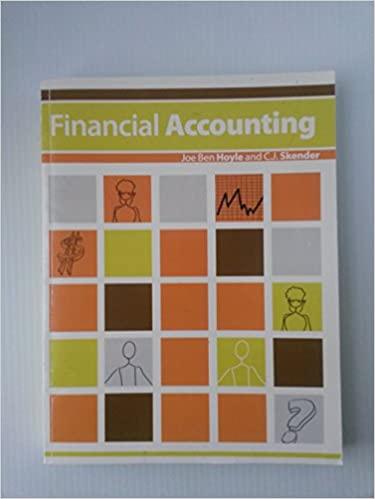Question
Fantastic! Not only did our salespeople do a good job in meeting the sales budget this year, but our production people did a good job
| Fantastic! Not only did our salespeople do a good job in meeting the sales budget this year, but our production people did a good job in controlling costs as well, said Eric Hogan, president of Pacific Company. Our $18,300 overall manufacturing cost variance is only 1.2% of the $1,536,000 standard cost of products made during the year. Thats well within the 3% parameter set by management for acceptable variances. It looks like everyone will be in line for a bonus this year. |
| The company produces and sells a single product. The standard cost card for the product follows: |
| Standard Cost Cardper Unit | ||
| Direct materials, 2.00 feet at $8.45 per foot | $ | 16.90 |
| Direct labor, 1.4 direct labor-hours at $16 per direct labor-hour | 22.40 | |
| Variable overhead, 1.4 direct labor-hours at $2.50 per direct labor-hour | 3.50 | |
| Fixed overhead, 1.4 direct labor-hours at $6.00 per direct labor-hour | 8.40 | |
| Standard cost per unit | $ | 51.20 |
| The following additional information is available for the year just completed: |
| a. | The company manufactured 30,000 units of product during the year. |
| b. | A total of 64,000 feet of material was purchased during the year at a cost of $8.55 per foot. All of this material was used to manufacture the 30,000 units. There were no beginning or ending inventories for the year. |
| c. | The company worked 43,500 direct labor-hours during the year at a direct labor cost of $15.80 per hour. |
| d. | Overhead is applied to products on the basis of standard direct labor-hours. Data relating to manufacturing overhead costs follow: |
| Denominator activity level (direct labor-hours) | 35,000 | |
| Budgeted fixed overhead costs | $ | 210,000 |
| Actual variable overhead costs incurred | $ | 108,000 |
| Actual fixed overhead costs incurred | $ | 211,800 |
| Required: | |
| 1. | Compute the materials price and quantity variances for the year. (Round Standard Price and Actual Price to 2 decimal places. Indicate the effect of each variance by selecting "F" for favorable, "U" for unfavorable, and "None" for no effect (i.e., zero variance).) |
| 2. | Compute the labor rate and efficiency variances for the year. (Round Standard Rate and Actual Rate to 2 decimal places. Indicate the effect of each variance by selecting "F" for favorable, "U" for unfavorable, and "None" for no effect (i.e., zero variance).) |
| 3. | For manufacturing overhead compute: |
| a. | The variable overhead rate and efficiency variances for the year. (Round Standard Rate and Actual Rate to 2 decimal places. Indicate the effect of each variance by selecting "F" for favorable, "U" for unfavorable, and "None" for no effect (i.e., zero variance).) |
| b. | The fixed overhead budget and volume variances for the year. (Indicate the effect of each variance by selecting "F" for favorable, "U" for unfavorable, and "None" for no effect (i.e., zero variance).) |
The analysis should inform your evaluation of the presidents view that bonuses should be given to everyone for good cost control during the year.
a) Identify the major problems and explain how they impact the organization; consider both behavioral and analytical factors.
b) How might managerial accounting concepts, tools, or techniques be applied to help resolve the problem?
c) What are possible consequences?
Step by Step Solution
There are 3 Steps involved in it
Step: 1

Get Instant Access to Expert-Tailored Solutions
See step-by-step solutions with expert insights and AI powered tools for academic success
Step: 2

Step: 3

Ace Your Homework with AI
Get the answers you need in no time with our AI-driven, step-by-step assistance
Get Started


